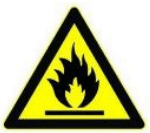
USER’SMANUAL
COMMERCIAL REACH-INREFRIGERATOR AND FREEZER
PLEASE READ THE MANUAL THOROUGHLY PRIOR TO EQUIPMENT SET-UP, OPERATION, AND MAINTENANCE
INSTALLATION
IMPORTANT! PLEASE READ BEFORE INSTALLATION
- If the unit has recently been transported, let stand idle for a minimum of 24 hours before plugging it in.
- Make sure that the unit drops down to the desired temperature before loading the unit with the product.
- Make sure that there is proper ventilation around the unit in the area where it will operate.
- Make sure all accessories are installed (i.e. shelves, shelf clips, casters) before plugging the unit in.
- Please read through the Operation / Owner’s Manual in its entirety.
CABINET LOCATION GUIDELINES
- Install the unit on strong and leveled surfaceso Unit may make unpleasant noises if the surface is uneveno Unit may malfunction if the surface is uneven
- Install the unit in an indoor, well-ventilated areao Unit performs more efficiently in a well-ventilated areao For best performance, please maintain clearance of 4” on the back of the unito Outdoor use may cause decreased efficiency and damage to the unit
- Avoid installation in high humidity and/or dusty areao Humidity could cause the unit to rust and decrease the efficiency of the unito Dust collected on the condenser coil will cause the unit to malfunction. Clean the condenser at least once a month with a brush or clean cloth
- Select a location away from heat and moisture-generating equipmento High ambient temperature will cause the compressor to overwork, leading to higher energy bills and a gradual breakdown of the unit.
ELECTRICAL
- Ensure that the required voltage of the compressor is being supplied at all times.
- Low or high voltage can detrimentally affect the refrigeration unit.
- All units should be plugged into a grounded and properly sized electrical outlet with appropriate overcurrent protection. Please refer to the electrical requirement on the nameplate. Please make sure that your unit has its own dedicated outlet.
- Do not use an extension cord Please pay close attention to the safety notices in this section.Disregarding these notices may lead to serious injury and/or damage to the unit.
ATTENTION
- To minimize shock and fire hazards, be sure not to overload the outlet. Please designate one outlet for your unit.
- Do not use extension cords.
- Do not put your hands under the unit when the unit is required to be moved.
- When the unit is not in use for a long period of time, please unplug the unit from the outlet.
- After unplugging the unit, wait at least 10 minutes before re-plugging it. Failure to do so could cause damage to the compressor.

- DANGER- Risk of fire or explosion. The flammable refrigerant used. To be repaired only by trained service personnel. Do not puncture refrigerant tubing.
- CAUTION – Risk of fire or explosion. The flammable refrigerant used. Consult repair manual/owner’s guide before attempting to service this product. All safety precautions must be followed.
- CAUTION – Risk of fire or explosion. Dispose of properly in accordance with federal or local regulations. The flammable refrigerant used.
- CAUTION – Risk of fire or explosion due to puncture of refrigerant tubing; follow handling instructions carefully. The flammable refrigerant used.
- CAUTION – Keep clear of obstruction of all ventilation openings in the appliance enclosure or in the structure for building-in.
UNPLUG CORD
- To minimize shock and fire hazards, please do not plug or unplug the cord with wet hands.
- During maintenance and cleaning, please unplug the unit.
PROPER GROUNDING REQUIRED
To minimize shock and fire hazards, make sure that the unit is properly grounded.
PROHIBITED
- Do not attempt to remove or repair any component unless instructed by the factory.
- Make sure that the unit is not resting on or against the electrical cord and plug.
- To minimize personal injury, do not hang on the doors.
- Do not store any flammable and explosive gas or liquids inside the unit.
- Do not attempt to alter or tamper with the electrical cord.
REGULAR MAINTENANCE
CLEANING THE CONDENSER COIL
- For efficient operation, it is important that the condenser surface be kept free of dust, dirt, and lint.
- We recommend cleaning the condenser coil and fins at least once per month.
- Clean with a commercial condenser coil cleaner, available from any kitchen equipment retailer. Brush the condenser fins from top to bottom, not side to side.
- After cleaning, straighten any bent condenser fins with a fin comb.
CLEANING THE FAN BLADE AND MOTOR
If necessary, clean the fan blades and motor with a soft cloth, if it is necessary to wash the fan blades, cover the fan motor to prevent moisture damage.
CLEANING THE INTERIOR OF UNIT
- When cleaning the cabinet interior, use a solvent of warm water and mild soap.
- Do not use steel wool, caustic soap, abrasive cleaners, or bleach that may damage the stainless-steel surface.
- Wash door gaskets on a regular basis, preferably weekly. Simply remove gaskets from the frame of the door, soak in warm water and soap for thirty (30) minutes, dry with a soft cloth, and replace.
- Check door gaskets for proper seals after they are replaced.
- Periodically remove the shelves and pilasters from the unit and clean them with mild soap and warm water. To remove the pilasters, first remove the shelves and shelf brackets. Then, simply lift the pilaster up and out.
WARNING
Disconnect the power cord before cleaning any parts of the unit.
TROUBLESHOOTING
Before requesting any service on your unit, please check the following points. Please note that this guide serves only as a reference for solutions to common problems.
| SYMPTOM | POSSIBLE CAUSE | CORRECTIVE ACTION |
| Compressor not running | Fuse has blown or circuit breaker tripped | Replace fuse or reset circuit breaker |
| Power cord unplugged | Plug in the power cord | |
| Thermostat set too high | Set the thermostat to lower temperature | |
| Cabinet in defrost cycle | Wait for defrost cycle to finish | |
| The condensing unit runs for long periods of time | An excessive amount of warm product placed in the cabinet | Allow adequate time for the product to cool down. |
| Prolonged door opening or door ajar | Ensure doors are closed when not in use. Avoid opening doors for long periods of time | |
| Door gasket(s) not sealing properly | Ensure gaskets are snapped in completely. Remove the gasket and wash with soap and water. Check the condition of the gasket and replace if necessary. | |
| Dirty condenser coil | Clean the condenser coil | |
| Evaporator coil iced over | Unplug the unit and allow coil to defrost. Make sure the thermostat is not set too cold. Ensure that door gasket(s) are sealing properly. | |
| Cabinet temperature is too warm | Thermostat set too warm | Set the thermostat to lower temperature |
| Blocking airflow | Re-arrange product to allow for proper airflow. Make sure there is at least four inches of clearance from the evaporator. | |
| An excessive amount of warm product placed in the cabinet | Allow adequate time for the product to cool down | |
| Fuse has blown or circuit breaker topped | Replace fuse or reset circuit breaker | |
| Dirty condenser coil | Clean the condenser coil | |
| Prolonged door opening or door ajar | Ensure doors are closed when not in use | |
| Evaporator coil iced over | Avoid opening doors for long periods of time (see above) | |
| Cabinet is noisy | Loose part(s) | Locate and tighten loose part(s) |
| Tubing vibration | Ensure tubing is free from contact with other tubing or components |
[xyz-ips snippet=”download-snippet”]

